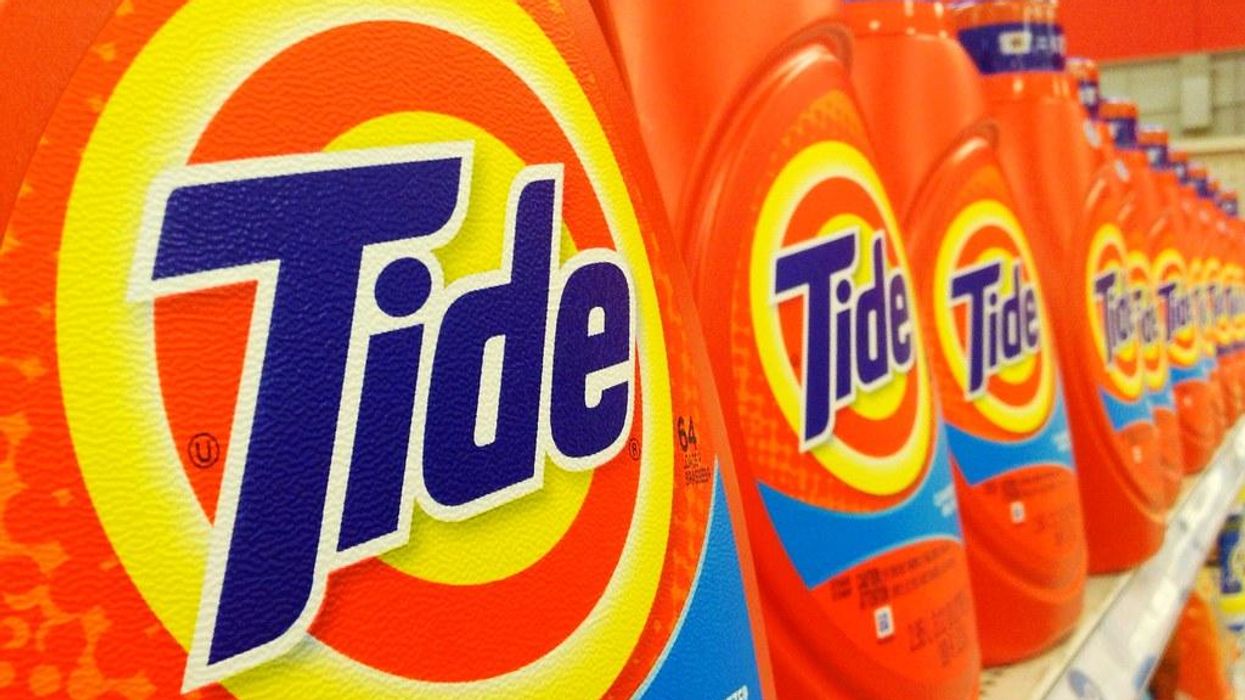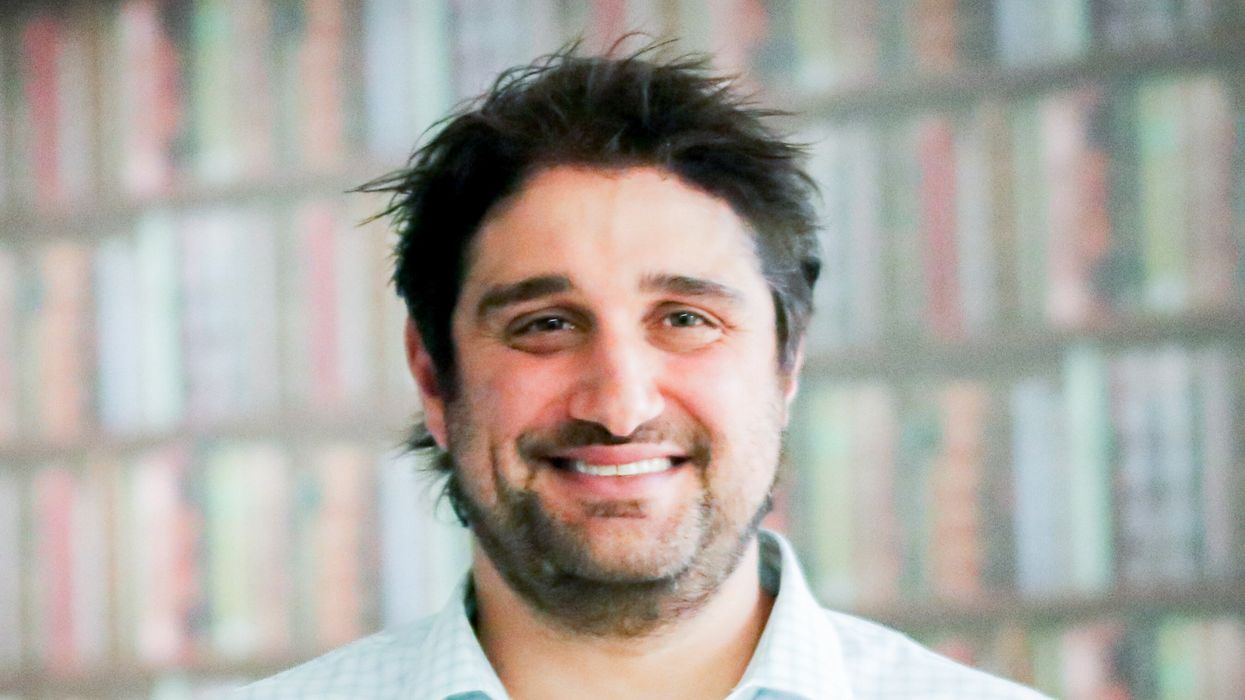Marketing
19 January 2023
Procter & Gamble holds share, shifts marketing as prices rise
The CPG bellwether sees more uncertainty ahead in 2023.

Tide is a P&G brand. (Photo by Flick user Mike Mozart, used under a Creative Commons license.
The CPG bellwether sees more uncertainty ahead in 2023.

Tide is a P&G brand. (Photo by Flick user Mike Mozart, used under a Creative Commons license.
At Procter and Gamble, uncertainty is continuing into 2023.
The Cincinnati-based consumer goods company, which is one of the world’s largest, reported earnings for the quarter ended Dec. 31 on Thursday that indicated rising costs and resulting price increases were continuing to create a complex environment. Key results include:
P&G’s earnings are a snapshot of the health of the maker of brands like Tide, Gillette and Pampers. Given the size of the company, its presence across multiple consumer categories, and the fact that P&G reports earnings early in the cycle, they are also closely watched as a bellwether for the economy, and health of the American consumer. Here are a look at three takeaways from executives’ earnings call with analysts:
With margins under pressure, brands must evaluate their marketing spend. While CFO Andre Schulten said that P&G's current media investment is “sufficient” in reach and frequency, he said the company increased marketing spend by $140 million on a quarterly basis.
P&G has also recognized opportunities to change how it executes media and advertising. In the baby care category, the business grew by 10% over the last year. This was aided by a 20% increase in reach and top-of-mind awareness by 26%, while saving 15% on media spend.
“They have completely shifted the way they run their media,” Schulten said of baby care. “...The equation here really allows for sufficiency at lower cost.”
With baby care, P&G is aiming to reach a relatively narrow demographic by its measure, as households with babies that are diapering age is about 3-4% of the population. But innovation has also been effective for categories that seek to go wider.
“The fabric care team in the U.S. has brought their media planning and buying in-house, developing proprietary algorithms to better place ads during the TV programming, for example, and that in and of itself has allowed $65 million of savings in one year, while increasing frequency,” Schulten said.
When asked about the macroeconomic picture for 2023, CEO Jon Moeller sought to push back against any narrative that the shocks of the last three years have subsided. COVID vaccinations are more widespread and the supply chain is clearing up, but plenty of challenges remain. Here’s the response in full, which illustrates the environment before CPGs:
The world seems to want everything to be better as do I. That's really not reality though. There's an incredible amount of uncertainty that remains. None of us, I think, globally really understand what the recovery rate in China is going to be, as an example. And nobody really understands what the new policies and practices are going to mean in terms of consumer confidence in that context. You have the war in Eastern Europe. You have the highest inflation rates in 40 years. You have continued volatility in both the currency markets and the commodity markets. And importantly, that currency exposure for us is not a simple dollar exposure. There's a lot of cross rate exposures within that, which I realize makes it difficult to penetrate. But for example, the cross rate between the British pound and the euro has a significant impact on our bottom line.
So all that put together, while I'm extremely happy with the progress the organization is making, [and] I'm extremely confident that the strategy that we have is the right one that's going to continue to serve us well, it's just not an easy time to be taking up guidance to the top range of possibility.
In the U.S., P&G is watching closely to see whether consumers opt for private label products following price increases. Schulten said the rates of this happening have been “relatively steady” in the last six months, and doesn’t see change coming.
Overall, the company has continued to hold its existing market share. Globally, 27 of 50 categories grew or held share in the quarter, and aggregate share was even with the previous year. In the U.S., share grew 0.5% from the prior year.
“If past behavior over the last six months, nine months is any indication, I think the consumer is relatively steady in the U.S., which gives us great confidence,” Schulten said.
On the Move has the latest from Amazon, Lovesac and more.
Ryan Cohen is executive chairman of GameStop. (Photo by Flickr user Bill Jerome, used under a Creative Commons) license.
This week, leadership is changing at GameStop, Sorel and Beautycounter. Meanwhile, key executives are departing at Amazon, Wayfair and Lovesac.
Here’s a look at the latest shuffles:
GameStop announced the termination of Matthew Furlong as CEO on Wednesday. A brief statement did not provide a reason for the firing.
With the move, Chewy founder and activist investor Ryan Cohen was named executive chairman of the video game retailer. Cohen will be responsible for capital allocation and overseeing management.
It came as the company reported a 10% year-over-year decline in net sales for the first quarter. Meanwhile, the company’s net loss improved by 62%.
In an SEC filing, GameStop further added this “We believe the combination of these efforts to stabilize and optimize our core business and achieve sustained profitability while also focusing on capital allocation under Mr. Cohen’s leadership will further unlock long-term value creation for our stockholders.”
Cohen was revealed as GameStop's largest shareholder when he disclosed a 10% stake in the retailer in 2020. GameStop went on to become a leading name in the meme stock rise of 2021.
Mark Nenow is stepping down as president of the Sorel brand in order to focus on his health.
After rising to the role in 2015, Nenow spearheaded a transformation of Columbia Sportswear-owned Sorel from a men’s workwear brand to a fashion-focused brand that led with a women’s offering of boots, sandals and sneakers.
“Mark led the brand to sales of $347 million in net sales in 2022,” said Columbia Sportswear CEO Tim Boyle, in a statement. “His leadership has been invaluable to this company, and we wish him the very best.”
Columbia will conduct a search for Nenow’s replacement. Craig Zanon, the company’s SVP of emerging brands, will lead Sorel in the interim.
Beautycounter appointed board member Mindy Mackenzie as interim CEO, succeeding Marc Rey. According to the brand, Rey and the board “mutually decided to transition to a new phase of leadership for Beautycounter.”
McKenzie, a former executive at Carlyle, McKinsey and Jim Beam, will lead the company as it conducts a search for a permanent CEO. Additionally, former Natura & Co CEO Roberto Marques will join Beautycounter’s board as chair.
As part of the transition, Nicole Malozi is also joining the company as chief financial officer. She brings experience from Tatcha, Nike, and DFS Group Limited.
Melissa Nick, a VP of customer fulfillment for North America at Amazon, will leave the company, effective June 16, CNBC reported. Nick joined the company in 2014, and oversaw a region that included nearly 300 fulfillment centers. After doubling its supply chain footprint during the pandemic, Amazon recently reorganized its fulfillment operations to take a regional approach, as opposed to a national model that often resulted in items shipping across the country.

Jon Blotner (Courtesy photo)
Steve Oblak will retire from the role of chief commercial officer at home goods marketplace Wayfair. With the move, Jon Blotner will be promoted to chief commercial officer.
"Steve has served as a critical part of our leadership team and played a pivotal role in Wayfair's growth, helping us grow from a $250 million business when he joined to $12 billion in net revenue today,” said Wayfair CEO Niraj Shah, in a statement. “He oversaw countless milestones, from helping to launch the Wayfair brand as we brought together hundreds of sites into a single platform, to launching new categories, business lines, and geographies while overseeing our North American and European businesses, to leading our debut into physical retail.”
Blotner previously oversaw exclusive and specialty retail brands, as well as digital media at Wayfair. Before joining the company, he served as president of Gemvara.com prior to its 2016 acquisition by Berkshire Hathaway.
Furniture retailer Lovesac said Donna Dellomo will retire as EVP and CFO, and move to an advisory role, effective June 30. Dellomo was with Lovesac for six years.
Keith Siegner was appointed as the next EVP and CFO. He brings experience as CFO of esports company Vindex, as well as executive roles at Yum! Brands, UBS Securities and Credit Suisse.
Additionally, Jack Krause will retire from the role of chief strategy officer, effective June 30. His responsibilities will be divided between CEO Shawn Nelson and president Mary Fox.
“Since joining Lovesac, Jack has played an instrumental role in transforming the Company into a true omni channel retailer by helping expand our physical touchpoints and digital platform as we continue to disrupt the industry,” said Nelson, in a statement.
The National Retail Federation announced the addition of five new board members. They include: